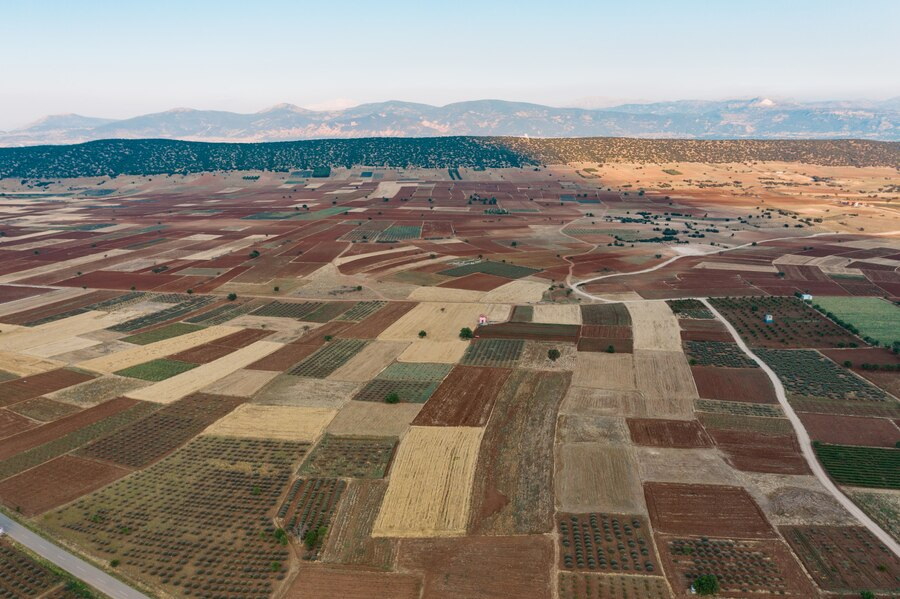
Land investing presents a unique and versatile opportunity within the broader real estate market, allowing investors to diversify their portfolios and achieve long-term financial growth. Unlike other types of real estate investments, land is not subject to the same maintenance, tenant, or depreciation issues that often burden developed properties. This makes land a relatively low-maintenance and stable asset, ideal for those seeking passive income or long-term capital appreciation. However, land investing is not without its challenges. Investors must consider factors such as zoning regulations, environmental concerns, and market volatility, which can influence the value and potential for development of the land. Understanding these elements, along with the local market dynamics, is crucial for any investor hoping to succeed in land investments. Proper due diligence is key to ensuring that the land meets the intended investment goals, whether that’s for resale, development, or rental income generation.
To navigate the complexities of land investing successfully, investors must employ a well-rounded strategy that includes research, diversification, and risk management. Research is essential, as it helps investors identify areas with growth potential and assess the feasibility of land development or improvement. For instance, understanding the trends in local population growth, infrastructure development, and market demand can provide valuable insight into which properties are likely to appreciate in value. Additionally, diversifying land investments across different types, such as farmland, raw land, and commercial land, can mitigate risk while optimizing the overall return on investment. In some cases, investors may also choose to lease the land, creating a steady stream of income without the complexities of full-scale development. Whether an investor opts for a more hands-off approach or actively develops the land, a solid understanding of market forces, legal regulations, and financial structures will be instrumental in reaping the rewards of land investing.
What Is Land Investing?
Land investing involves purchasing parcels of undeveloped or developed land for future use or resale. Unlike residential or commercial property investing, land is typically free from the complexities of maintenance, tenants, and buildings. It is often a long-term investment strategy that can offer substantial returns if done correctly.
Land investments come in different types, including raw land (undeveloped land), farmland, and developed land with existing infrastructure. Investors may choose to purchase land for different reasons: to build on it, sell it for a profit, lease it to farmers or other businesses, or hold onto it as a hedge against inflation.

Types of Land Investments
There are several types of land investments, each offering unique opportunities depending on the investor's goals. Raw land is undeveloped property with no improvements, typically purchased for long-term appreciation or future development. Farmland involves agricultural land used for growing crops or livestock, providing income through farming or leasing. Infill land, located in developed urban areas, is often sought after for future development due to its access to infrastructure and city services. Commercial land is purchased for business developments like offices or retail spaces, while timberland investments focus on forested areas for timber harvesting. Finally, land leases involve renting out the land for various uses, providing passive income without selling the property. Each type of land offers distinct advantages and requires careful research to identify the best fit for an investor's portfolio and risk tolerance. The primary types of land investments include:
Raw Land (Undeveloped Land)
Raw land is a vacant plot of land with no improvements or infrastructure. Investors often purchase raw land to hold long-term for future appreciation or to develop it for a specific purpose. The lack of development typically makes raw land more affordable, but it also carries higher risks, such as zoning restrictions or environmental concerns.
Farmland
Farmland investments involve purchasing agricultural land to grow crops, raise livestock, or lease to farmers. This type of investment offers the potential for income generation through crop production or lease payments. Farmland investments also benefit from long-term appreciation, particularly in regions with increasing demand for food and agricultural products.
Infill Land
Infill land refers to parcels of land located within developed urban areas that are either vacant or underutilized. These plots may have access to city services like water, sewer, and electricity, which makes them attractive for development projects. Infill land investments can generate substantial profits, but they also carry more risk due to the complexities of urban zoning, permits, and regulations.
Commercial Land
Commercial land investments involve purchasing land for commercial development, such as retail centers, office buildings, or warehouses. This type of investment often requires larger capital outlay and may involve more complex development projects. However, it can offer attractive returns, especially in high-demand urban locations.
Land Leases
Land leases involve leasing the land to individuals or companies for specific uses, such as farming, recreational activities, or building developments. Land leases can provide a steady stream of passive income for landowners without the need to sell the land outright.
Timberland
Timberland investments involve purchasing land with an emphasis on harvesting timber or timber-related products. This type of land investment offers both income generation and long-term appreciation, particularly in regions with abundant forests.

Benefits of Land Investing
Land investing offers several key benefits that make it an attractive option for both seasoned investors and beginners. One of the primary advantages is the potential for long-term appreciation, as land generally increases in value over time, especially in growing or developing areas. Unlike other forms of real estate, land requires minimal maintenance, reducing ongoing costs and making it a hassle-free investment. Additionally, land serves as a strong hedge against inflation, maintaining its value even during economic downturns. Furthermore, land investments provide diversification within a portfolio, helping to spread risk across different asset classes. Lastly, landowners may also benefit from tax advantages, such as deductions for property taxes or special tax treatments for farmland, making it a more tax-efficient investment. These benefits make land investing an appealing and stable choice for long-term wealth accumulation.These benefits include:
Appreciation in Value
Land tends to appreciate over time, especially in growing or developing areas. Factors such as population growth, infrastructure development, and increased demand for housing or commercial properties can contribute to the land’s rising value.
Low Maintenance Costs
Unlike developed properties that require ongoing maintenance, land typically incurs very low maintenance costs. As long as the land is not being developed, there are minimal expenses associated with ownership. This makes land investing a relatively hassle-free option compared to other forms of real estate.
Hedge Against Inflation
Land is often seen as a hedge against inflation. As the cost of living rises, so does the demand for land, particularly in desirable areas. Land investments tend to hold their value over time, making them an attractive option for protecting wealth against economic uncertainty.
Diversification
Land provides an excellent way to diversify an investment portfolio. Real estate markets often move independently of the stock market, which helps mitigate risk. By adding land to their portfolio, investors can reduce their overall exposure to stock market fluctuations.
Tax Benefits
In many regions, landowners can take advantage of tax benefits, such as deductions for property taxes or capital gains exemptions when selling land for profit. Additionally, farmland investments may qualify for special tax treatment, making them a tax-efficient investment strategy.

Risks Involved in Land Investing
Land investing, while offering great potential, comes with several risks that investors must carefully consider. One of the primary risks is zoning and land use restrictions, which can limit the property’s development potential and reduce its value. Environmental concerns, such as contamination or protected species habitats, can also hinder land usability and lead to costly remediation. Additionally, land is a less liquid asset, meaning it can take time to sell and realize returns, especially if the property is in a less desirable location. Financing can also pose challenges, as traditional mortgage lenders often offer less favorable terms for raw land purchases, requiring larger down payments or higher interest rates. Finally, land markets can be volatile, with property values fluctuating due to factors like economic downturns, changes in demand, or natural disasters, making it crucial for investors to conduct thorough research and prepare for market uncertainties.
Zoning and Land Use Restrictions
Zoning laws and land use restrictions can significantly impact the value of a property. For example, a parcel of land that was once zoned for residential use might be restricted to agricultural use only, which could limit the investor's ability to develop or resell the property as desired. It is critical to research zoning laws and regulations before purchasing land.
Environmental Concerns
Environmental issues such as contamination, wetlands, or protected species habitats can make land less valuable or even unsellable. Before investing in land, it’s important to conduct environmental due diligence to ensure the property is free from environmental liabilities.
Liquidity
Land investments tend to be less liquid than other forms of real estate. Selling land can take time, especially if the property is located in a rural area or has limited development potential. Investors should be prepared to hold onto land for extended periods before realizing a return on investment.
Financing Challenges
Financing land purchases can be more difficult than purchasing developed property. Traditional mortgage lenders may be hesitant to finance raw land, requiring larger down payments or offering higher interest rates. As a result, investors may need to explore alternative financing options, such as seller financing or private lenders.
Market Volatility
While land generally appreciates over time, short-term fluctuations in the market can affect land values. Economic downturns, changes in local demand, and unexpected events like natural disasters can temporarily impact land prices.

Strategies for Successful Land Investment
To maximize returns and minimize risk, investors should adopt effective land investment strategies. Below are several strategies to consider:
Research the Market
Understanding the local real estate market is essential for successful land investing. Research trends in population growth, infrastructure development, and zoning changes that can influence land values. Work with a local real estate agent who specializes in land to gain insights into the best areas for investment.
Buy Land in Growing Areas
One of the best ways to maximize the value of land is by purchasing in areas that are expected to grow. Look for regions where there are signs of urbanization, increased demand for housing, or major infrastructure projects. This can lead to significant appreciation over time as the area becomes more developed.
Consider Land Development
If you have the capital and expertise, developing land can yield substantial returns. This could involve subdividing large plots into smaller parcels, adding infrastructure like roads and utilities, or building residential or commercial properties. Development can be a complex and costly process, but it offers the potential for higher profits.
Lease Land for Income
If you prefer a more passive investment strategy, consider leasing your land to farmers, businesses, or recreational users. Farmland leases can provide a steady income stream, while commercial land leases can generate long-term rental income. Ensure that you create a clear lease agreement to protect your interests.
Hold for Long-Term Appreciation
In some cases, the best strategy is simply to buy land and hold it for the long term. Over time, the value of land typically increases as surrounding areas develop. Holding land can be a reliable way to accumulate wealth without the risks and complexities of active development.
Diversify Land Types
To reduce risk and maximize potential returns, diversify your land investments. Invest in a mix of raw land, farmland, and developed land to balance long-term growth with income-generating opportunities. By spreading your investments across different land types, you can protect your portfolio from market volatility.
Land investing offers numerous opportunities for those looking to diversify their portfolios and build long-term wealth. Whether you are purchasing raw land to hold for appreciation, leasing land for income, or developing land for resale, there are a variety of investment solutions to suit different investor needs. However, like any investment, land investing requires thorough research, due diligence, and a clear strategy to mitigate risks. By carefully considering the types of land investments, understanding the market, and employing the right investment strategies, investors can unlock the full potential of land and reap the rewards of this stable and lucrative asset class.

Get a no-obligation offer in just a few minutes.





.webp)




.webp)
